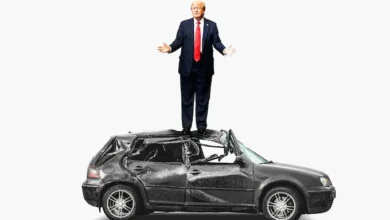‘Robot’ was coined 100 years ago, in a play predicting human extinction by android hands
The big climax arrives in Act Three. There’s an uprising, as the robots take over the factory that created them. By the Epilogue, humankind is all but extinct. Fed up with their treatment, the robots have laid waste to the hands that created them, sparing only a single human — a fellow worker.
The decision may have ultimately doomed themselves, however, as they failed to save the one person capable of proliferating their kind. It is, however, the last living man who finds humanity in a pair of robots and likens them to the first two humans, in the biblical tradition. It’s a hopeful note following an extinction that mostly occurred between acts. Two robots exit the stage, leaving the last man to utter the final words, “Adam—Eve.”
To borrow a phrase from another science fiction cautionary tale released seven decades later, “Life finds a way.”
It’s the final lesson of a play loaded to the artificial gills with allegory. Published 100 years ago (and premiering 99 years ago last month) R.U.R. (Rossum’s Universal Robots), by Czech writer Karel Čapek, is best remembered for bringing the word “robot” to sci-fi — and English, generally. It’s a key piece of the seven-time Nobel Prize-nominated writer’s legacy, who infused deeply held political beliefs into his early science fiction writings.
Čapek’s use of “robot” is rooted in the Old Church Slavonic word, “robot,” which translates to forced labor” or “worker” in some derivations. “The word also has cognates in German, Russian, Polish and Czech,” history professor Howard Markel explained in a 2011 interview with NPR. “And it’s really a product of the Central European system of serfdom, where a tenants’ rent was paid for in forced labor or service.”
The concept of robots as forced labor dates back at least as far as the word robot itself — so, too, does the notion of a robotic uprising. That is to say that “kill all humans” wasn’t uttered first by Bender in Futurama or in the comments section of Boston Dynamics’ Big Dog YouTube video. No, the first commonly understood robots to bear that name were wholly invested in returning power to the hands of the exploited workers — by any means necessary.
The roots of robotics in human society is commonly acknowledged to date back centuries prior, to classical cultures like Greek mythology and the golems of Jewish tradition. But Čapek is the one who gave us the word we still use today.
Of course, the writer’s robots were more human than we presently associate with the word. In fact, perhaps, more in common with the older term, “android,” which stems from a Greek term that translates to “having the form of a man/human.” The robots of R.U.R. are living beings, built of artificial flesh, who eventually inherit the Earth.
“When the play opens, a few decades beyond the present day, the factory had turned out already, following a secret formula, hundreds of thousands, and even millions, of manufactured workmen, living automats, without souls, desires or feelings,” the official “Story of the Play” explains. “They are high-powered laborers, good for nothing but work. There are two grades, the unskilled and the skilled, and especially trained workmen are furnished on request.”
Set largely in the year 2000, the play grapples with questions of humanity decades before either Blade Runner or its source material, with the robots ultimately achieving a sort of humanity somewhere between Pinocchio and Oz’s Tin Man, albeit out from the ashes of the human creators they murdered en masse. A happy ending, perhaps, by 1920 standards.
For more robotics, check out our upcoming event March 3 at UC Berkeley.
Source: TechCrunch




